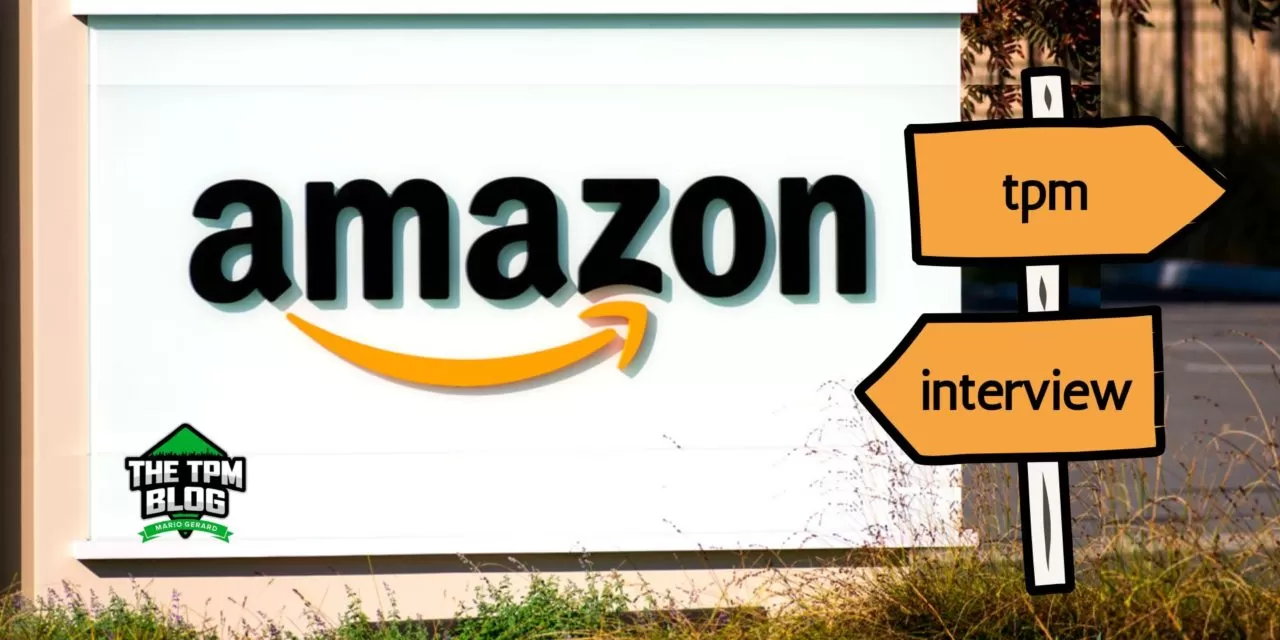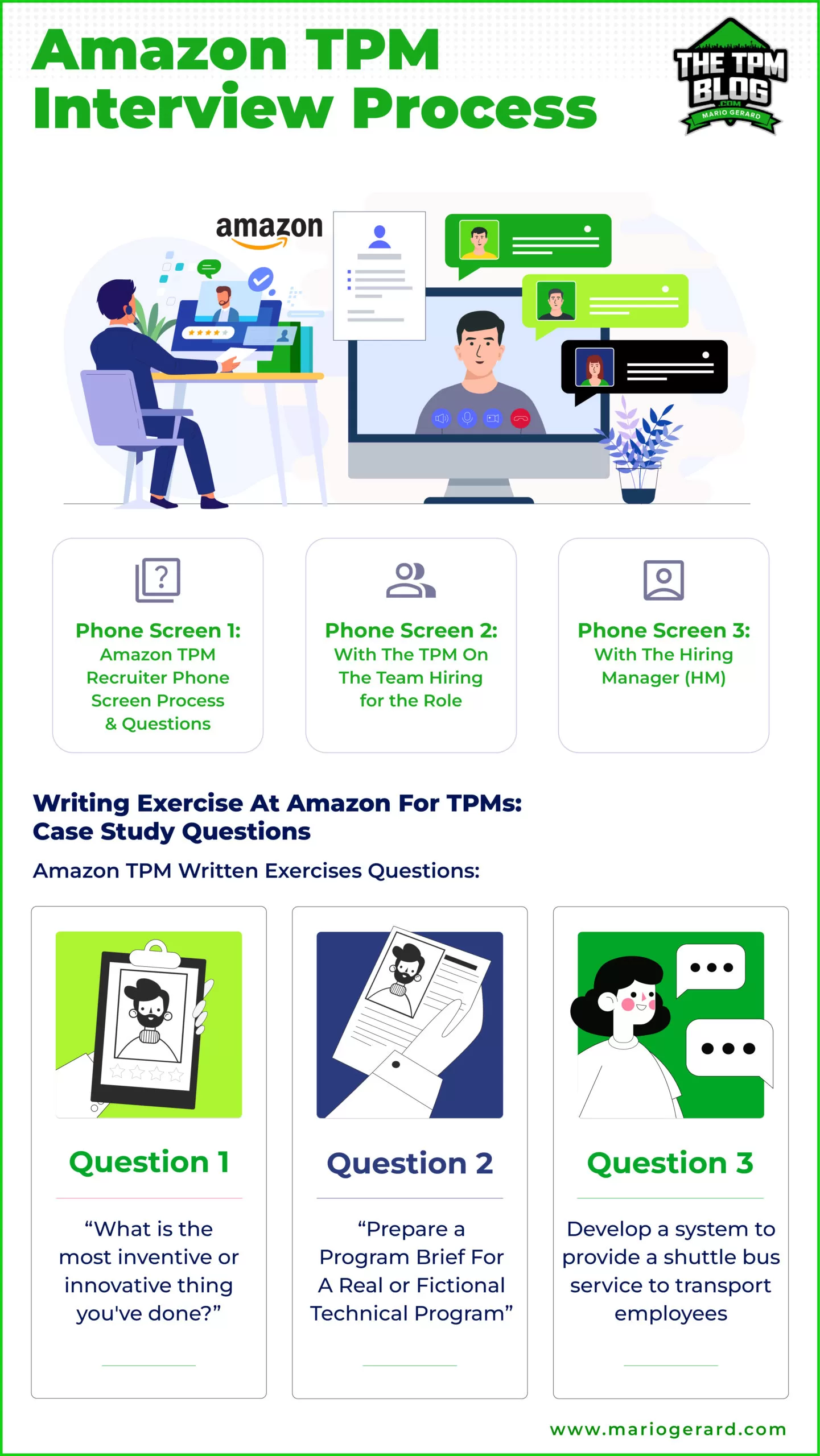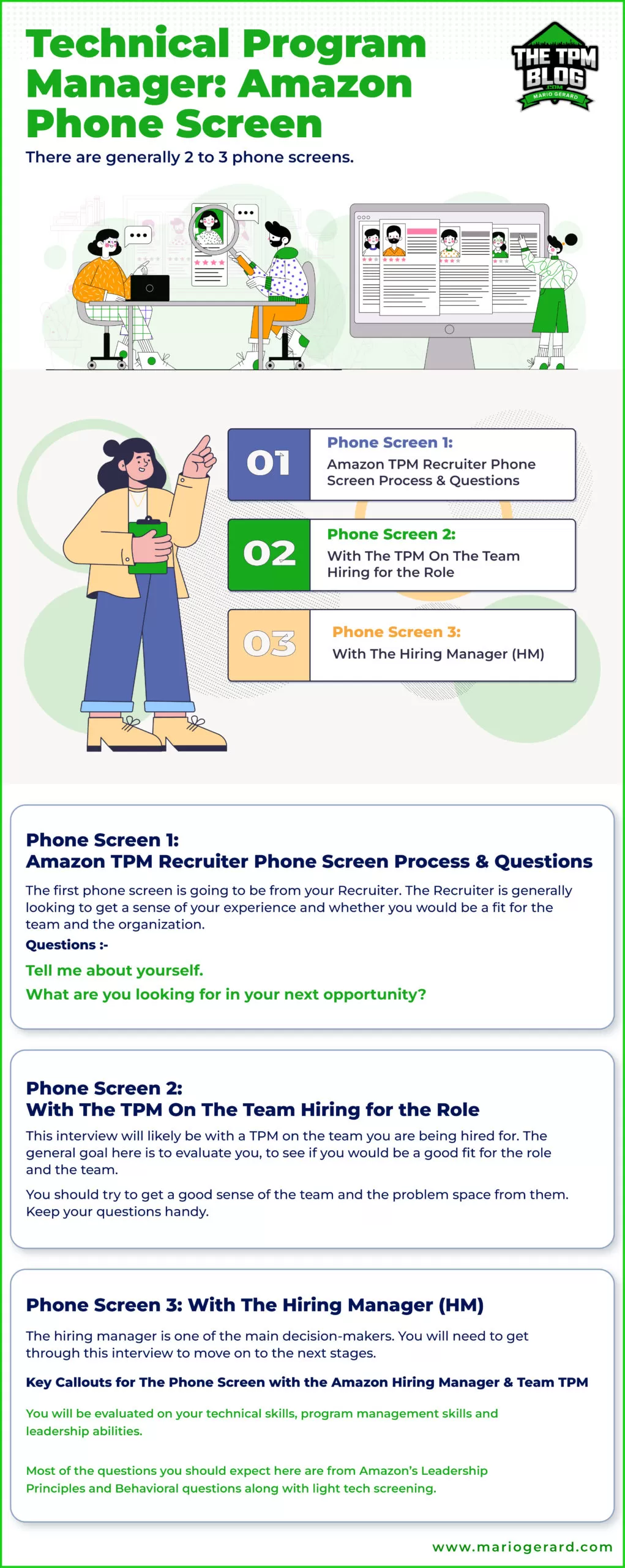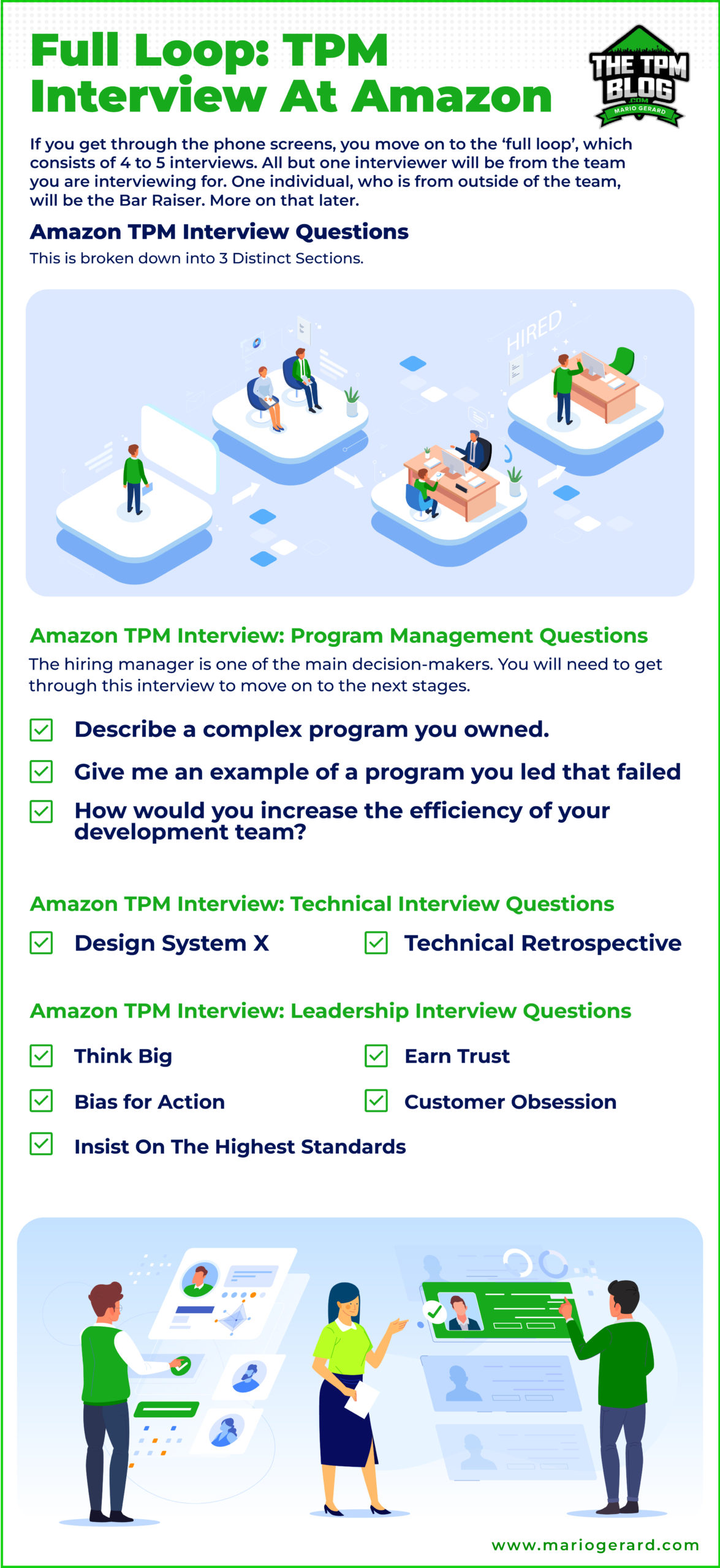Last updated on January 2nd, 2024 at 12:54 pm
Introduction
Amazon was said to be one of the very first companies to introduce the Technical Program Management role. When the role was originally envisioned, a Technical Program Manager was evaluated to be just as technically equipped as a Level 1 Software Engineer. A TPM was expected to have coding skills but this requirement has been relaxed since.
Below is an excerpt from a podcast released over 10 years ago, featuring Ethan Evans, an ex-Amazon VP.
As you embark on this journey to find your next employer, let me tell you that getting into a tech company will change your life in more ways than you can imagine. You get to move to a whole new league of TPMs, if you are currently working in a non-tech company, and you are more than likely to double your pay. So it is imperative that you prepare well! The competition is tough, and the only way to crack the interview is to prepare well by getting the help you need.
Over the years, Amazon has recalibrated its interview processes for hiring TPMs. In this post, we will cover the below topics.
- Amazon TPM Interview Process
- Interview Questions For TPMs at Amazon
○ Program Management Know-how
○ Technical Capability
○ Leadership Principles - Evaluation Criteria
Click on the above topics to jump to them directly.
Amazon TPM Interview Process
See this video by Deepti Rompally, a TPM turned SDM from Amazon.
How To Get A Call From Amazon
To begin with, you will need to get a Hiring Manager or Recruiter to reach out to you. Here are the various ways you can get a call from Amazon:
- Referral: One of the best ways to get a call is to have someone internally refer you.
- Apply Online: Apply for a few opportunities at Amazon’s Career Portal. Generally, if you apply for 3-4 opportunities, there is a high likelihood you will get a call back in 2-3 weeks, if you have the right sort of experience and a decent resume.
- Linkedin (1 of 2): Join the TPM’s LinkedIn Group, where you can see TPM opportunities posted by Amazon HMs. This will give you a chance to reach out to these HMs directly.
- Linkedin (2 of 2): Reach out to Amazon Recruiters on LinkedIn and politely introduce yourself. Ask them if there are any teams that could use a TPM like yourself.
- Blind: Blind has always been an excellent place to find referrals on offer.
- Resume: All the above methods are moot if you do not have a good resume. There is an entire section on the “Ace The TPM Interview” program which features topics like structuring your resume, the keywords you should and should not use, and examples of the best TPM resumes. Be sure to check it out.
Technical Program Manager: Amazon Phone Screen
There are generally 2 to 3 phone screens.
Phone Screen 1: Amazon TPM Recruiter Phone Screen Process & Questions
The first phone screen is going to be from your Recruiter. The Recruiter is generally looking to get a sense of your experience and whether you would be a fit for the team and the organization. Remember that your Recruiter is your main point of contact throughout this process. Be nice to them 🙂
At times, Recruiters do go over a list of softball questions.
Here are some of the questions they might ask:
- Tell me about yourself.
○ What have you been doing for the past couple of years? - What are you looking for in your next opportunity?
- What are some of the skill sets that you consider to be your strengths?
- Where do you see yourself in five years?
○ Are you looking for an IC role or a People Manager role? - Can you describe some of the programs you are currently leading?
- Why Amazon? Why this team?
- How do you generally go about making decisions at work? (Answer: By Using Data.)
Do’s and Don’ts When Talking To The Recruiter At Amazon
- If the Recruiter asks you for salary expectations or your current salary, never answer this question with a number. It generally puts you in a position of disadvantage. It is now illegal to ask this in some states. At the most, you could give them a range. See below for more information.
- Always emphasize how your experience relates to the opportunity on hand.
- The Recruiter is also looking to see if you would meet/exceed the bar for a TPM at the level they are looking to hire.
- They will also check for the basics – Do you have good communication skills? Are you a good fit for Amazon in general?, etc
- When talking to the Recruiter, express genuine interest in the role & in working for Amazon.
- Pick out a couple of Amazon’s leadership principles and amplify them by communicating how you embody them. (This is should be done throughout the entire Interview Process)
- Since this is generally a 30 min call, try to keep your answers brief. The Recruiter is trying to get a sense of what you do. It is not a deep dive. 🙂
Questions You Should Ask The Amazon Recruiter
It is really important that you, as a candidate, ask the right questions. This will help you as you go through the other rounds of interviews.
- How big is the team?
- What is the charter of the team?
- How long has this position been open?
- Is this a new role, or is it a backfill?
- Can you tell me about the leadership style of the hiring manager?
- What are the key tenets of the team?
- Is the team geographically dispersed?
Phone Screen 2: With The TPM On The Team Hiring for the Role
This interview will likely be with a TPM on the team you are being hired for. The general goal here is to evaluate you, to see if you would be a good fit for the role and the team.
You should try to get a good sense of the team and the problem space from them. Keep your questions handy.
Phone Screen 3: With The Hiring Manager (HM)
The hiring manager is one of the main decision-makers. You will need to get through this interview to move on to the next stages.
Key Callouts for The Phone Screen with the Amazon Hiring Manager & Team TPM
- The hiring manager may have a 30 min or 1 hour call. It depends on the HM and other factors. While interviewing you, the HM and the TPM are looking to see if you are bringing the right set of skills to the table and if your skills match what they are looking for.
- You will be evaluated on your technical skills, program management skills and leadership abilities.
- They will access the recommended level for which they are going to be interviewing you. For TPMs, you will generally be interviewed at an L6, which is the Sr. TPM role at Amazon. If you have prior experience working at other tech/product based companies for 5+ years and you have handled larger scope and impact, you could be put at a Level 7, which would be a Principal TPM role.
- Most of the questions you should expect here are from Amazon’s Leadership Principles and Behavioral questions along with light tech screening.
The HM and the TPM phone screen questions will be covered along with the full loop questions. Think of this as a mini-Interview loop.
Note: Sometimes, you may talk to the HM before talking to a TPM on the team or vice-versa.
Writing Exercise At Amazon For TPMs: Case Study Questions
Since TPMs author several documents at Amazon, you might get a written assignment, a case study of sorts. This is generally given to the candidate and is expected to be completed within a week’s time. Some teams expect this back in 48 hours. The HM generally gets to review this. There is debate over how much value the HM might put on this.
Amazon TPM Written Exercises Questions:
Question 1) “What is the most inventive or innovative thing you’ve done?”
Instructions
- It doesn’t have to be something that’s patented.
- It could be a process change, product idea, a new metric or a customer-facing interface – something that was your idea.
- It cannot be anything your current or previous employer would deem confidential information.
- Please provide enough context to understand the invention/innovation.
- What problem were you seeking to solve?
- Why was it necessary?
- What was the result?
- How did it make a difference and change things?
Question 2) “Prepare a Program Brief For A Real or Fictional Technical Program”
Instructions
- Your technical program should solve a problem or take advantage of an opportunity for an engineering or product organization.
- The audience for the Program Brief is a group of software engineers, your key cross-functional partners, and your peer group of Technical Program Managers.
- You may format your Program Brief however you like.
- Please limit your solution to no more than 4 pages.
- Do not include your name or any other personal identifiers in the document.
- You may draw on past experiences and programs, but take care not to share information artifacts protected by NDA or any information that you do not own.
Question 3) (This is a long one in my opinion)
Construct: Your company provides a shuttle bus service to transport employees between the many buildings located across the company’s downtown campuses. Currently, the shuttle bus schedule is accessible via a static webpage and operates on a first-come, first-serve basis. Due to the company’s growth, the number of riders has increased with fluctuating volumes throughout the day. Assume over 40,000 rides are provided every day.
Your Director asks you to design a shuttle service monitoring and scheduling tool. The shuttle service tool needs to be easy to use by everyone in the company with the ability to search shuttle routes, book one-time or recurring rides, and track shuttle buses. Assume the service needs to be accessible from mobile devices. Employees should be able to schedule shuttle rides easily, regardless of technical skill. There is an existing service called the Shuttle Tracker (accessible via API) that can return the location and status of shuttles. Assume you have a team of five engineers available to do the work.
Questions for the above construct:
- What questions would you ask? What other information would you need? (State all assumptions you are making when answering these questions.)
- What metrics would you use to measure your solution’s performance?
- a. Please describe key components of the system that you propose, assuming no external solutions can be purchased. (Hint: Describe infrastructure that is necessary to create an end-to-end solution and how you would prioritize delivery.)
b. What are the technical and functional limitations of your proposed solution? How would you address them? - a. The company loves your service and ridership is growing 50% every year. What are the technical improvements required to support this growth?
b. Assume your solution is scaling effectively but your integration to the Shuttle Tracker is throttling your requests to 0.25 transactions per second (TPS). As employees commute to and from work, they check the status of the shuttles, which is resulting in request rates averaging 5 TPS from all the mobile clients. This call pattern continues for 1 hour. Riders are reporting latency and timeouts in the service. How can you fix the latency and timeout issue? - Your Director is pleased with your solution but desires the ability to manage ridership during certain hours. More specifically, when reviewing team metrics, the Director noticed that the sprint velocity is struggling. So, the Director asks you to create a functionality to limit who can request a shuttle. The Director also wants the ability to limit certain timeframes for their employees to request shuttle services so that the team stays focused on their work.
a. How would you respond?
b. Imagine that your team is resisting this approach. What would you tell them that could reconcile the disagreement between your team’s opinion and the Director?
Do’s and Don’ts When You Are Doing The Writing Exercise
- Decide the flow of the document. Get your bullet points down.
○ Introduction
○ Problem Statement
– Set the context
– Complexity should be well described
– KPIs /OKRs To Achieve/Track
○ Action Taken
○ Results - More importantly, clarify your role and what impact it had on the organization.
- Keep it short and tidy 🙂 No longer than 2-3 pages long.
- Ensure you are clearly and concisely answering the question asked. Some suggestions are given below:
○ Use shorter than 30 words per sentence while avoiding clutter words.
– Due to the fact that → because
– Totally lacked the ability to → could not
○ Replace adjectives with data.
– We made the platform much faster vs. We reduced server-side tp90 latency from 10ms to 1ms.
○ Eliminate Ambiguity.
– “nearly all customers.”
– “significantly better”
○ Ask yourself if your writing passes the “so what” test.
Full Loop: TPM Interview At Amazon
If you get through the phone screens, you move on to the ‘full loop’, which consists of 4 to 5 interviews. All but one interviewer will be from the team you are interviewing for. One individual, who is from outside of the team, will be the Bar Raiser. More on that later.
Each interviewer is assigned 2 leadership principles, or they could be tasked with evaluating your technical aptitude.
Amazon TPM Interview Questions
This is broken down into 3 Distinct Sections.
Amazon TPM Interview: Program Management Questions
- Describe a complex program you owned.
- Can you give me an example of a time you dealt with conflict while running your program?
- Give me an example of a time when you didn’t think you were going to meet the commitments you promised. How did you identify the risk and communicate it to stakeholders? What was the outcome?
- Give me an example of a program you led that failed.
- How would you increase the efficiency of your development team?
- Tell me about a time you missed a deadline. What happened, and what did you learn?
- Describe a time you used specific metrics to drive change.
- What are the most challenging obstacles you have encountered while running a program, and what did you do about it?
Amazon TPM Interview: Technical Interview Questions
Technical Questions come in two flavors:
- Design System X (You can find a lot of these questions here.)
- Design a Chat system
- Design a Notification system
- Design a News Feed system
- Design a Search system
- Design a URL shortening system
- Design Dropbox
- Technical Retrospective
This is where you will be asked to pick a program you led and do deep dive into its technicalities.
Amazon TPM Interview: Leadership Interview Questions
You can get the full read-up on leadership principles here. I will give you in depth pointers below on how Amazon’s leadership principles translate to Amazon’s TPM interview questions. I would recommend focusing on these 5 leadership principles for your loop as a TPM.
- Insist On The Highest Standards
- Describe a time you did not settle on achieving a significant outcome when your teammates felt that something was already good enough. Describe the situation.
- Describe a time when you could not meet your own expectations on a program.
- Think Big
- Describe a time you took a big risk and failed. What would you do differently?
- Tell me about the professional achievement you were most proud of.
- Bias for Action
- Tell me about a time you had to make a quick judgment call without time for deep analysis.
- Describe a time when you saw a problem and took the initiative to correct it rather than waiting for someone else to do it.
- Earn Trust
- Describe a time when you had to earn trust quickly as a TPM and how you went about doing it.
- Tell me about a time you uncovered a problem in your team and how you went about fixing the problem.
- Customer Obsession
- Tell me about a time when you could not meet a customer’s expectations. What happened, and how did you deal with the situation?
- How do you go about prioritizing your customer’s needs when you are dealing with multiple sets of customers or teams?
Common Misses When Preparing For An Amazon TPM Interview
Other than all that was said above, the two key aspects that most people miss here are:
- Actually embodying these leadership principles.
- Giving enough importance to the Technical Retrospective question. (This is where you pick a program you have worked on and dive deep into how you built its architecture as well as executed the program.)
Behind The Scenes At An Amazon TPM Interview
The first 2 to 3 phone screens are gates you will need to get through. If you fail in one of them, you are not likely to make it to the full loop interview.
After the full loop is complete, the entire panel meets for 30 minutes. Each interviewer is asked for a Hire or No Hire recommendation. After this, each individual goes through the details of what made them reach said decision.
This information is then collated to decide if you are a ‘Hire’, ‘Strong Hire’, ‘Not A Hire – Not suitable for this team’, or ‘Not suitable for Amazon’. These are quite self-explanatory but the key difference to note between ‘Not A Hire – Not suitable for this team’ and ‘Not suitable for Amazon’ is that if you are a ‘Not A Hire – Not suitable for this team’, you are generally passed on to another team. This is because the interview panel has found that you would likely be a good fit for Amazon, but you don’t have some particular skills that this team is looking for.
As the interview is going on, the team that is interviewing you is simultaneously sending feedback to the HM and the Bar Raiser. The HM and the Bar Raiser will determine if they would like to make you an offer and proceed with the leveling.
Amazon Bar Raiser
The Bar Raiser at Amazon:
- Generally leads the debrief session.
- Is outside the team you are interviewing for.
- Is there to ensure that the final decision is not biased. Think about them as an objective 3rd party.
- Can vito the HM’s decision – which is why it is critical to know who the Bar Raiser is.
- Is generally there to push your limits and to determine which level you should be positioned at.
- Is looking to ensure that you exceed the bar of performance by at least 50% of the TPMs currently working at your level in Amazon.
It’s always a great idea to ask the Recruiter whether they want you to wait before applying to other teams or not. If the Recruiter would like you to wait, then it’s likely that you did not meet the bar and you will need to wait for 6 months to a year. If not, you can immediately apply to other teams and you should start getting into more loops soon.
It’s good to remember that the level and the pay you are offered is determined by the interview planned during the debriefing. So how well you perform at the interview is key.
Best of Luck for your TPM interview at Amazon!
I would highly recommend taking a look at “Ace The TPM Interview” Program which has helped 100s of TPMs land roles at Amazon and other top tier 1 organizations.
Here are some great reads for anyone looking to join Amazon. The goal here is to understand how Amazon operates as an organization so that you can embody some of it while you interview:
I love hearing back from you, so please do post any questions and comments you have in the space below.
Thank You!















